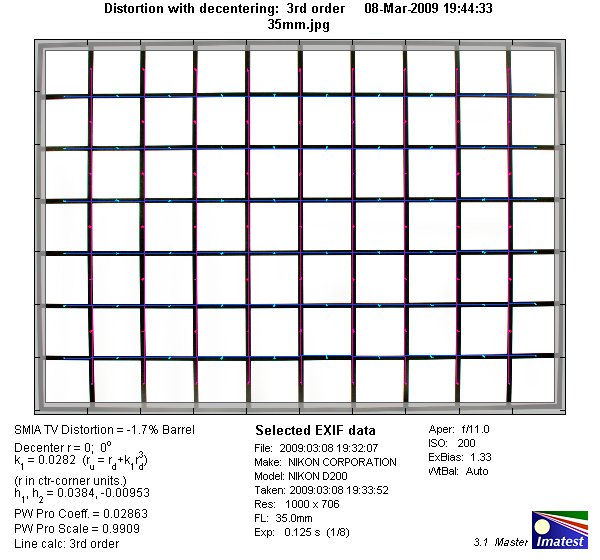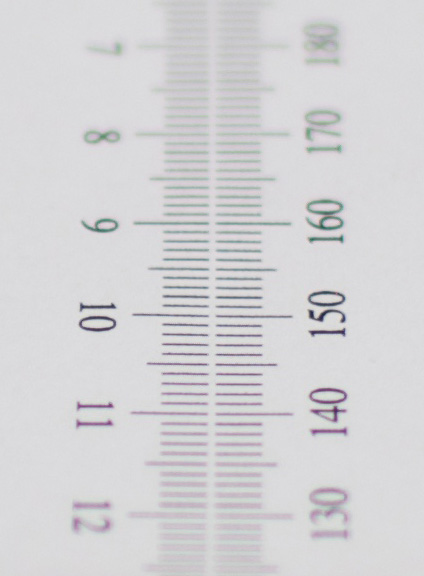|
Nikkor AF-S DX 35mm f/1.8 G - Review / Test Report - Analysis |
|
Lens Reviews -
Nikon / Nikkor (APS-C)
|
|
Page 2 of 3

Distortion
The lens shows barrel distortion at around 1.7%, certainly more than one would expect from a prime lens in this focal range.

The chart above has a real-world size of about 120x80cm.
Vignetting
Dedicated DX lenses usually suffer from higher vignetting (compared to FX glass on the same camera) and one would especially expect this behaviour from a fast lens. Consequently, the AF-S DX 35 shows moderate vignetting wide open, which is reduced to a not field-relevant level by f/2.8 already.

MTF (resolution)
The lens deliveres excellent resolution figures in the center thoughout the whole tested aperture range, the borders follow closely behind with very good values wide open to f/2.8 and excellent resolution at f/4 and f/5.6.
The extreme borders are visibly softer wide open and reach only good values, however stopping down helps to increase the resolution here. The peak is reached at f/2.8 already with slightly lower, but still very good values down to f/8.
Please note that the MTF results are not directly comparable across the different systems!
Below is a simplified summary of the formal findings. The chart shows line widths per picture height (LW/PH) which can be taken as a measure for sharpness.
If you want to know more about the MTF50 figures you may check out the corresponding Imatest Explanations
Chromatic Aberrations (CAs)
Chromatic aberrations (color shadows at harsh contrast transitions) are moderate wide open, but rather high for the rest of the aperture range. This is a somewhat disappointing behaviour, however lateral CAs (unlike LoCAs, see below) can easily corrected in post processing and most newer Nikon DSLRs already do this on their own (as well as most of the current RAW converters).

Bokeh
Unfortunately at wide open aperture the AF-S 35 shows a rather high amount of outlining resulting in a slightly nervous bokeh. From f/2.8 onwards these outlines disappear and the bokeh smoothens considerably, however highlights in the background remain troubled by LoCAs (see next section). In addition, despite rounded aperture blades, from f/5.6 onwards highlights in the background start to lose their circular shape.

Bokeh Fringing / Longitudinal Chromatic Aberrations (LoCA)
LoCAs (non-coinciding focal planes of the various colors) are a common issue with relatively fast glass. As you can
notice below the halos have different colors - magenta (red + blue) in front of the focus point
and green beyond. Truly "apochromatic" lenses don't show LoCAs but these lenses are very rare especially
below 100mm. Unlike lateral lateral CAs, LoCAs cannot easily be fixed in post processing.
Typical for most fast primes the AF-S 35 shows a considerable amount of LoCAs at large aperture settings (which can be field relevant, see the contra light f/1.8 shot in the samples section). Stopping down helps to reduce the amount of LoCAs significantly.
|
Move the mouse cursor over the f-stop marks below to observe the respective LoCAs
|
| f/1.8 |
f/2.8 |
f/4.0 |
f/5.6 |
|

|
|